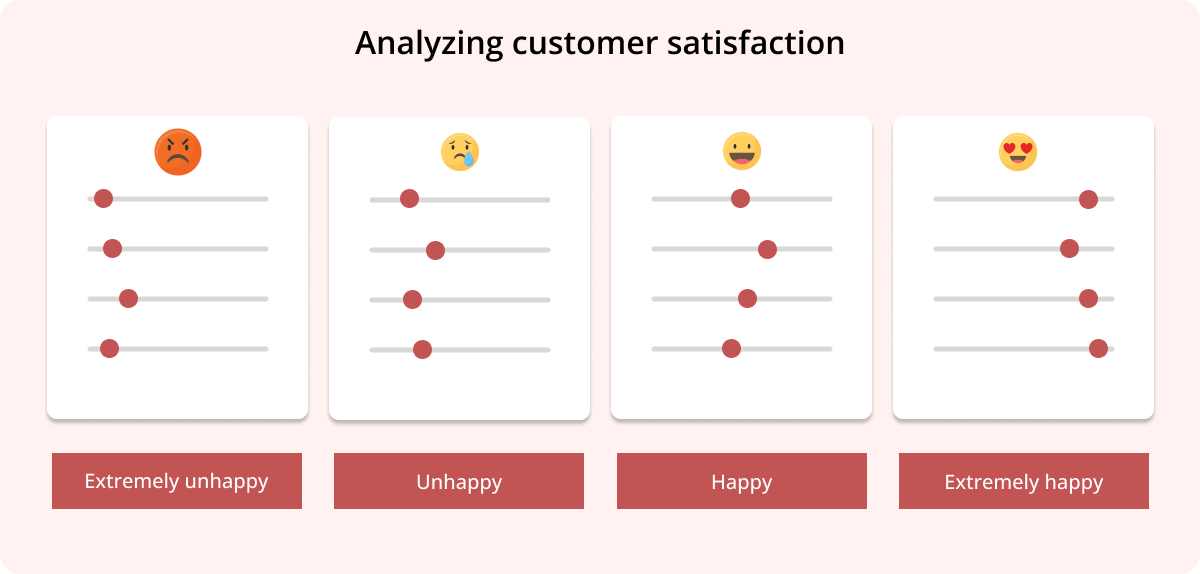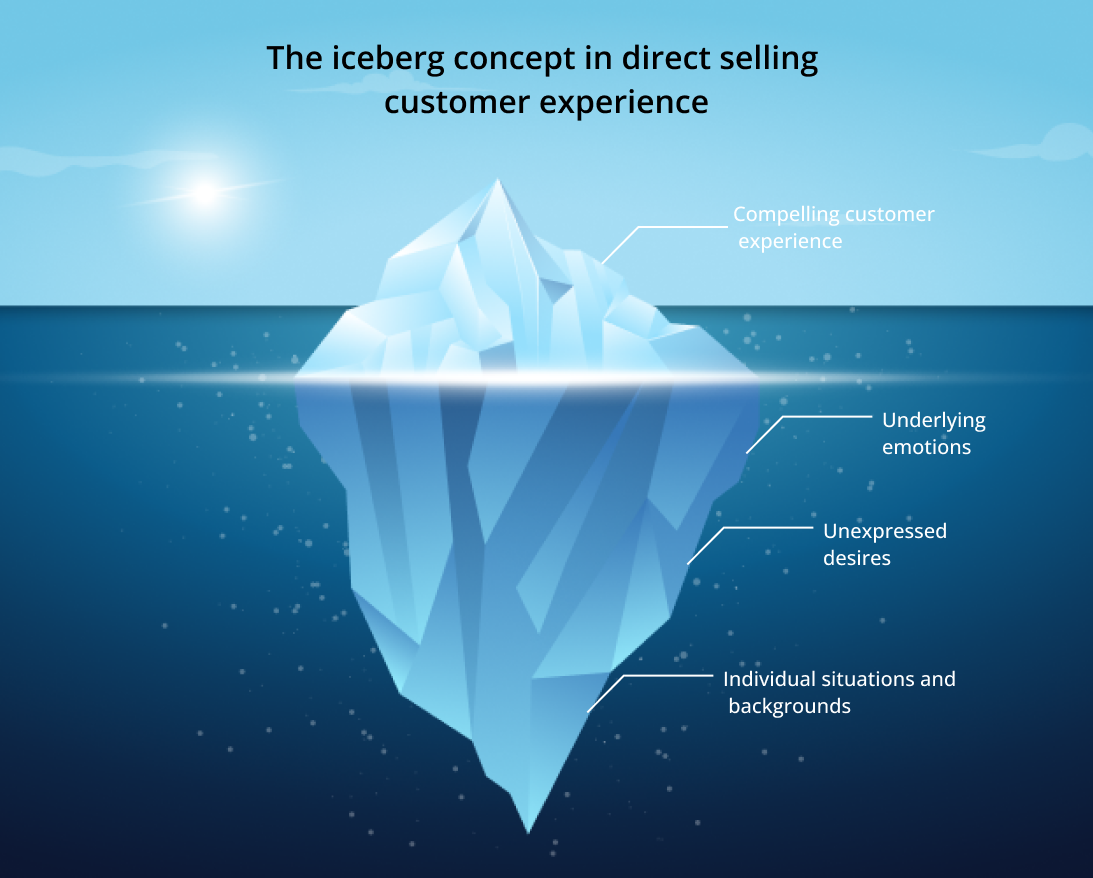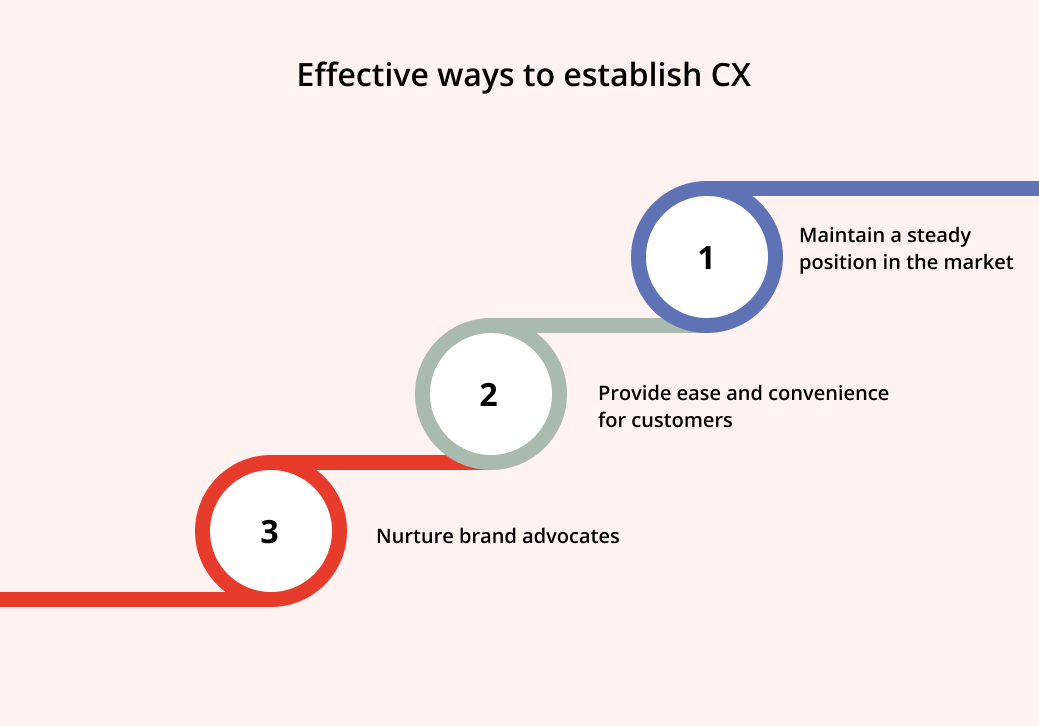Listening to someone telling their story is a normal or a very common thing to do. The process of listening could be active or passive depending on how intense your relationship is with the person, how serious the problem they are discussing is, and more importantly, how much effort you are putting into understanding what the person is trying to convey.
Talking about my personal condition, I am a very emotional being. A very minor gesture could instigate me no matter if it is happy or sad. And at the peak of both these emotions, I cry. To each, their own. While some people care less about others’ emotions, some invest their time and energy by just being a good listener. One step further, they empathize with the situation that someone else is going through and fit into their shoes to deliver support and care.

Gauging emotions
How surprising is it that we can recognize someone by their emotions. Someone's stable emotion is that person itself. This is the very secret that brands should identify before working on their strategies around a potential customer or a customer segment. Customer happiness and satisfaction, if measured on a scale of one to ten, could be ten different categories of customers ranging from extremely satisfied to extremely unsatisfied.
A happy customer is the best advertisement brands can invest in. And hence, identifying emotional trends, empathizing with them, connecting with their emotions, and engaging them, leveraging the situation is an ideal strategy to build customer rapport. Emotional branding and marketing have yielded the best results in the direct selling sector over the years in terms of customer acquisition, retention and building customer loyalty.

In the direct selling context, gauging emotions is crucial to understand and manage various aspects of the organization from distributor well-being, customer satisfaction, to overall performance of the business. Emotional gauging doesn’t just comprise of data collection, but it is about how brands revive their approaches towards insights gathered.
Major steps towards building a healthier work environment, improved customer relationships and increased business success are;
-
Validating the emotional quotient
-
Identifying what is lacking or what has gone wrong
-
Addressing issues promptly
The iceberg theory
In the psychological aspect, emotions pave the way to desires. For example, I had an emotional breakdown and decided to take retail therapy to get over it and went to a mall. Depending upon the level of the breakdown, I might just loiter around and buy nothing. Some other times, if I have had the happiest of days, I will pick up every random stuff I see, even if I don’t need it. The urge to buy or not buy is programmed by my innate senses driven by my emotions.
In the context of customer experience or CX, the iceberg theory is related to the concept that 90% of the iceberg is often beneath the water, innate human desire is hidden in the subconscious. Retrieving these emotions requires more novel marketing strategies than traditional marketing models, research and surveys, or even a vague analysis and observation of current business patterns.
Customer-centric companies generate 60% higher revenue compared to companies that do not prioritize customer experience.
Source: CX Index
Customer responses expressed on the surface in the form of feedback and complaints are only a minor portion of their overall feelings and experiences. Marketers often tend to notice only the latent desires leaving customers' innate desires unnoticed.
The direct selling fraternity has keenly been focusing on human emotions to gain sustainable results. At Epixel, our major objective is to understand the unacknowledged and deep-seated inclinations of our clients and to help them rework their strategies to deliver an elevated CX.
What are the key aspects that the industry is focusing on to enrich customer experiences inspired by the iceberg model.
Feedback at the superficial level
The evident part or the tip of the customer satisfaction iceberg wherein customer’s experience, including feedback and complaints received through surveys, reviews, or other types of direct communications with the brand or the business. In order to deliver a compelling customer experience, direct selling brands should actively seek to understand customer emotions, identify their expectations and unspoken choices that underlie their feedback.

Concealed emotions
Beyond the superficial level, or beneath the surface, customers might have various emotions both positive and negative that influence their overall experience with the brand. These emotions include delight, disappointment, distress, frustration, comfort, pleasure, or contentment. Customers, depending on their state of mind and intellect, respond to situations but often these innate feelings remain hidden.
Uncover the hidden aspects of customer experience with qualitative data derived through in-depth interviews, focus groups and surveys, which are efficient methods to gain insights about individual responses and unexpressed needs.
Unexpressed desires
Customers leave their needs and expectations unspoken most of the time expecting brands to identify and fulfill them. Recognizing what a customer might like and not like analyzing their shopping patterns, and the way they express their emotions, etc. can help direct selling brands reinforce positive customer experience.
Hyper personalization and tailored solutions could help address superficial and deeper issues which are the hidden factors that influence overall customer satisfaction.
Situations and background
Each customer's emotions and experience will be framed by their personal circumstances and their previous interactions with the brand. An individual identifying a brand as expensive, luxurious, or meant for the elite only kind of preconceived notions are born out of such circumstances. These kinds of emotions need not necessarily be evident, but definitely play a vital role in customer decisions and approach to the brand.
Loyal customer relationships
Below the surface, customers could possibly be forming enduring impressions about the brand. Their overall satisfaction, loyalty, and inclination to endorse the brand are crucial but would not be immediately evident.
Even when customer interests are expressed or unexpressed, recognize that long-term relationships and customer loyalty are built on consistently meeting or exceeding customer expectations.
73% customers opined that they consider customer experience as a prominent factor in their purchase decisions.
Source: PwC
In short, the iceberg theory for customer experience highlights the fact that what customers obviously state in their feedback is just the tip of an iceberg. Direct selling businesses should take a deep plunge to identify
-
What is beneath the surface
-
Understand and address the deeper human emotions,
-
Unspoken needs and unique customer circumstances that influence customer satisfaction and loyalty.
Key metrics to measuring customer experience in direct selling business
Assessing CX from time to time is an ideal way to analyze how previous investments toward improving customer experience have helped the brand achieve its targets and goals. It can also aid direct sellers to formulate new approaches for future improvements.
The Harvard Business Review in its recent findings says that, relying on one metrics alone would not serve the purpose of assessing CX instead, a brief range of metrics that sync with key roles across marketing, IT, customer service, and product development, business-critical KPIs and associated CX priorities should be considered. This could in turn empower organizations with a more accurate and actionable view of customers’ behaviors and perceptions.
Customer Satisfaction Score or CSAT – One of the most widely used metrics where customers can rate their satisfaction on a linear scale ranging from happy to unhappy. Brands could seek customer opinion with their products, services, or support by calculating the sum of all scores divided by the number of respondents. With CSAT, brands could also identify the customer pain points and address them from time to time.
Net Promoter Score or NPS – The most common customer loyalty and satisfaction metric to measure how likely customers would recommend a brand’s product or service to others. NPS uses single-question surveys with numbers ranging from –10 to +10 based on which brand loyalists and detractors can be figured out.
Customer Effort Score or CES – A customer experience metric that measures the amount of time a customer invests to resolve their problem with the brand. When a customer takes genuine efforts to communicate and engage with a support assistant to find a solution to their problem with the brand, it is identified as a customer’s genuine interest to help the brand enhance its customer experience.
Find out from our customers how our solutions give MLM businesses an edge and exceed customer expectations
Best practices to establish a compelling customer experience
Delivering compelling customer experience should begin with compelling customer understanding where brands, on the physical and digital front connect with customers at a deeper level making use of every major to minor opportunities.
Delivering effective learning opportunities right from the onboarding period enhances distributor performance where product knowledge, brand introduction, and brand awareness are effectively delivered.
How to effectively establish a compelling CX rooted in empathy and contentment?

Aligning organizational objectives with customer needs
Direct selling businesses revolve around distributors. Efficiently training distributors to understand the brand objectives to disseminate it rightly among the customers is one crucial step to make. For distributors are the key carriers who can alter customer’s perception about the brand, products or services.
-
Developing products
-
Identifying what customers prefer over what
-
How they would like to be treated
-
What they have been lacking so far, etc. are the key factors that need to be concentrated on to create a compelling CX.
From front-end customer service executives, sales and CX management force, the brand bearers should be capable of digging out unspoken concerns which are the fundamental drivers to delivering compelling experience.
Leverage ‘digital’ to the maximum
From getting a brand-new Maybach delivered to your doorstep with a few taps and swipes to doing a virtual property tour before making a real estate investment, digitality is what intensifies customer experience. Well, going digital involves a lot of factors that can influence the direct selling sector, from empowering its distributor force to improving customer relationships.
Direct selling beauty and cosmetic brands have set examples of compelling digital experience through an application that can help identify customers find out what category their skin falls under, based on which they could choose from the range of products that the brand has got to offer.
When a brand tells me that I need an SPF 50 sunscreen for the amount of sunlight I am exposed to every day, with the information I key in, it is like having an invisible friend helping me find solution to a problem I never knew I had.
Incentivizing customers
A happy customer could be a brand loyalist who can do word of mouth marketing, the powerful of it all. Brand recommendations from a satisfied user could do wonders for sales in the online and offline storefront. To keep up the customer’s spirits and spread the fire to new corners, incentivizing customers is an ideal way. This could not only elevate the customer experience but also increase a customer’s affinity towards the brand that would lead to lasting customer relationships.
Smooth handling of customer grievances
When a customer makes a support call, the first thing they expect from the service assistant is to listen to their concern patiently. The customer might be agitated or upset, recognize their tone, make them understand that you have understood the situation, assure them that their concern is your priority and stick to the deadline you promised to the customer to resolve the issue.
Encourage customers to complain, which is an ideal way for you to assess your performance. Also, non-complaining but dissatisfied customers leave the brand and move to substitutes. When a customer complaint is handled efficiently delivering quick and effective results, the customer makes a lasting impression about the brand which boosts the brand integrity.
Product return management
When a product is returned, online or offline, there is a percentage of disappointment that is evident. Minimizing the chances of returns is given prime importance by most direct selling companies operating in the ecommerce model but however, when a product return is given, make it a point to understand every nitty-gritty about the customer’s choice regarding the next product that is expected to be delivered to them.
Make it a point to update and manage your inventory with what is available and what is not to ensure that customer experience is maximized and return rates are minimized.

Elevated experience
With direct selling businesses finding their way out of the inflection point by implementing cutting-edge strategies to create a new saga of success and growth, compelling customer experience is indeed a necessity for the industry to churn new business possibilities. Understanding customer priorities and empathizing with their preferences is one way to intensify customer engagement.
When I browse through an ecommerce site and exit without adding any items to the cart or making a purchase, I would later get an email asking how my browsing experience was. This small yet crucial gesture makes me feel that my presence in their digital storefront is counted as important. And therefore, my affinity towards the brand is sure to hit a high.
Similarly, when a brand is all eyes and ears to cater to every significant need of its customers, there unfolds an impeccable customer experience, an asset for direct selling brands to conquer better heights.









Leave your comment
Fill up and remark your valuable comment.